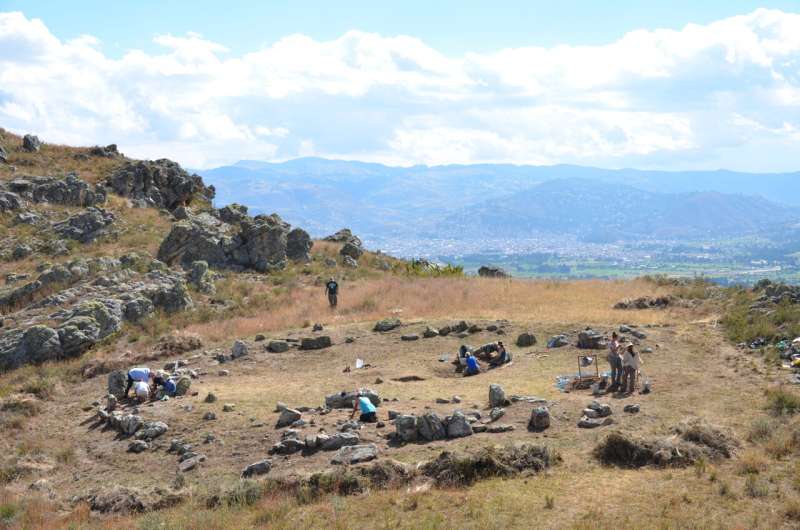Discovery of Ancient Stone Plaza in the Andes by Anthropologists

February 14, 2024
Science X's editorial team, adhering to strict review processes and policies, has fact-checked this article. The editorial team has endorsed the following characteristics as testaments to the accuracy and credibility of the content.
- Fact-checked
- Peer-reviewed publication
- Trusted source
- Proofread
Reviewed by the University of Wyoming
Two anthropology professors from the University of Wyoming have made an intriguing discovery in Andean South America. They have found one of the earliest circular plazas, exhibiting monumental megalithic architecture where large stones are used for construction without applying any mortar.
The discovery was made at the Callacpuma archaeological site situated in the Cajamarca Basin of northern Peru. The distinct feature about this plaza is that it is constructed using large megalithic stones placed vertically, which is a construction style not seen in the Andes before. Associate Professor Jason Toohey, the project head, and Professor Melissa Murphy embarked on this research journey in 2015, and the excavations in the plaza began in 2018.
In their paper, titled 'A Monumental Stone Plaza at 4750 BP in the Cajamarca Valley of Peru', they present new data related to this early known megalithic circular plaza. The paper was published in Science Advances.
The plaza's initial construction dates back around 4750 years based on radiocarbon dating, which makes it one of the earliest architectural marvels of this kind in the Americas.
The team conducted thorough excavations within the plaza to understand its construction timeline better. They discovered artefacts related to past life, collected charcoal samples for dating and afterwards cleaned, processed, and analysed all the material remains in the laboratory.
According to Toohey, 'The construction of this structure predates the Great Pyramids of Egypt by around 100 years, and it was built around the same time as Stonehenge.' Therefore, the circular plaza at Callacpuma is one of the earliest known examples of monumental and megalithic architecture in the Cajamarca Valley and ancient Peru.
Toohey believes that the plaza might have served as a meeting point and a ceremonial ground for the early inhabitants of the Cajamarca Valley. 'These people were primarily hunters and gatherers who had recently started practicing agriculture and domesticating animals.'
The plaza consists of two concentric walls and spans around 60 feet in diameter.
The project is overseen by Toohey and Patricia Chirinos Ogata from the University of California-Santa Barbara, with the team including Murphy and undergraduate and graduate students from Peru and the U.S.
Toohey is an anthropological archaeologist known for his holistic and multidisciplinary approach to archaeology. He has been conducting fieldwork in the Peruvian Andes since 2003. On the other hand, Murphy, the department head for anthropology at UW, is a biological anthropologist specialising in bioarchaeology and is devoted to multidisciplinary methods in anthropology.
'We believe in community outreach and involve local residents in sharing and discussing our findings,' says Toohey. 'We emphasise the importance of cultural heritage and believe in mutual cooperation to continue scientific research and site preservation.'
Journal Information: Science Advances
Article source: University of Wyoming




